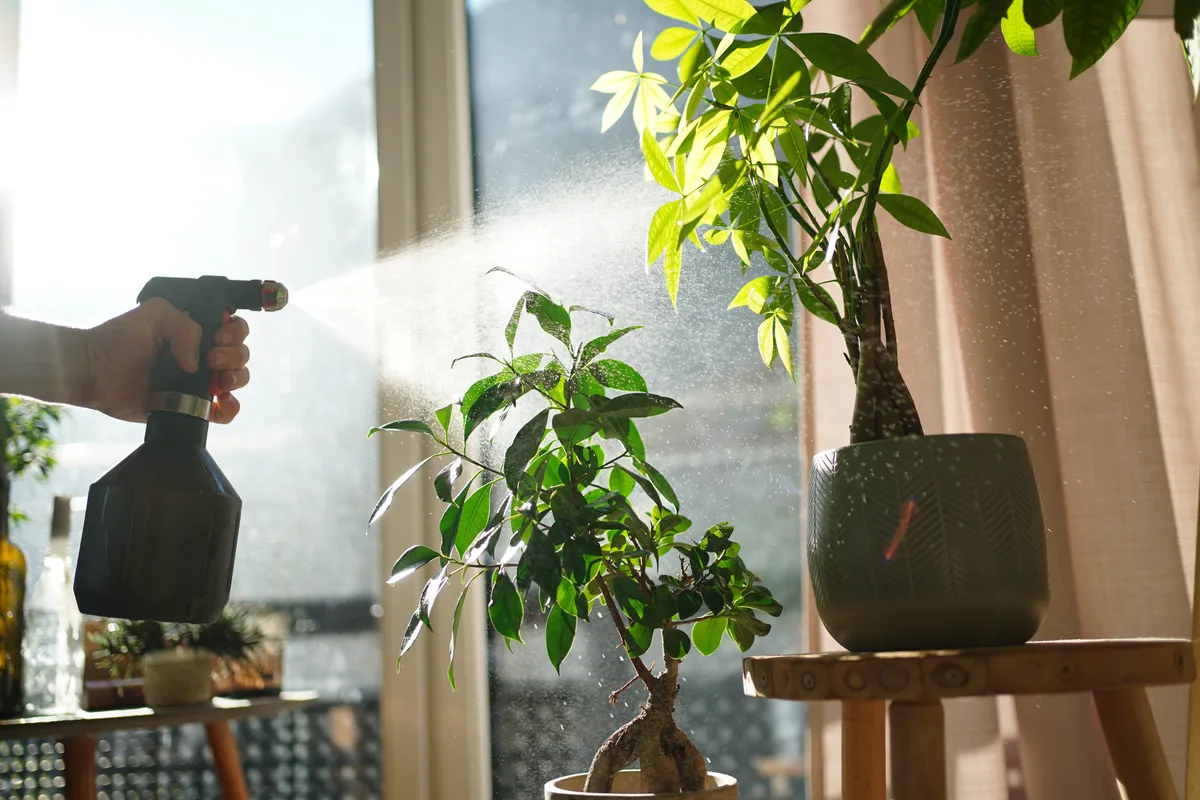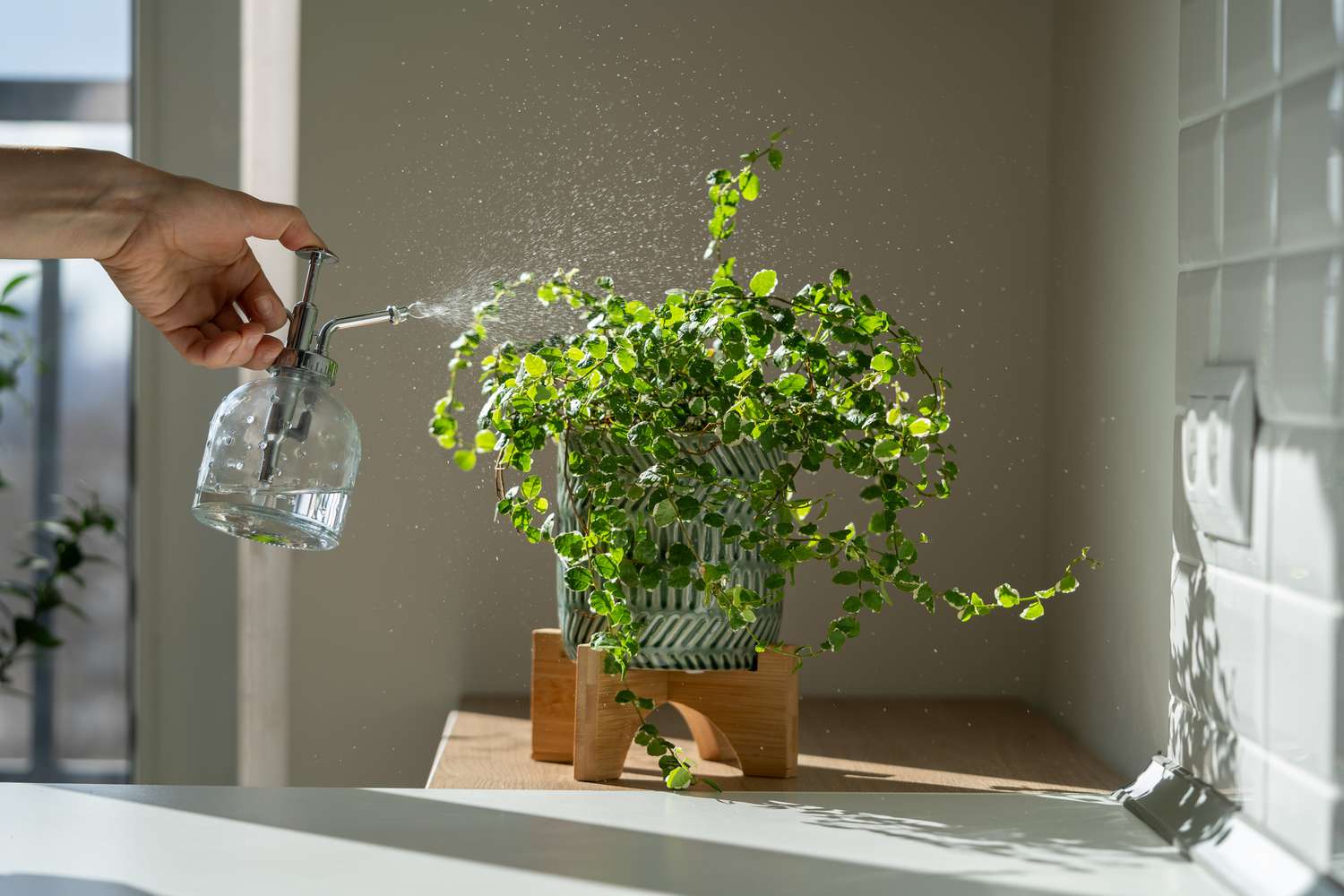Yes, you should spray house plants with water. Misting helps maintain humidity and keeps the leaves clean.
Misting house plants can significantly benefit their health and appearance. Many indoor plants thrive in humid environments, and regular misting can replicate their natural habitat. This practice helps in preventing the leaves from drying out, especially in dry indoor conditions.
Clean leaves can absorb sunlight more efficiently, aiding in better photosynthesis. Misting also helps in deterring pests that may infest the plant. Use room-temperature water for misting to avoid shocking the plant. Ensure you mist in the morning, allowing the leaves to dry throughout the day. Over-misting should be avoided to prevent fungal issues. Proper misting supports vibrant and healthy house plants.
Introduction To Plant Spraying
Spraying house plants with water can benefit plant health. It helps maintain moisture levels, keep leaves clean, and prevent pests. But, not all plants need spraying. Understanding the purpose and dispelling myths is crucial.
Purpose Of Spraying
Spraying plants serves several functions:
- Moisture: Keeps leaves hydrated, especially in dry climates.
- Cleaning: Removes dust and dirt from leaves.
- Pest Control: Deters pests like spider mites.
Some plants thrive in humid environments. Spraying can mimic their natural habitat. For others, it helps clean their surfaces and boost their health.
Common Misconceptions
Many believe all plants need spraying, but this is not true. Some plants, like succulents, do not benefit from extra moisture. They can rot if over-sprayed. Another myth is that spraying replaces watering. It does not. Spraying only affects the surface, while watering nourishes the roots.
Another common misconception is that spraying can cure all plant problems. While it helps with humidity and cleanliness, it cannot fix nutrient deficiencies or soil issues. Understanding these nuances ensures you care for your plants effectively.
:strip_icc()/how-to-water-houseplants-5651236-primary-3aa1e5b5021640ee96184b6755caa964.jpg)
Credit: www.bhg.com
Benefits Of Spraying House Plants
Spraying house plants with water has many advantages. It helps plants thrive better indoors. This simple action can make a big difference in plant health.
Humidity Increase
Indoor air is often dry. Spraying plants adds moisture to the air. This helps plants stay hydrated. Higher humidity also benefits the skin and respiratory system. It can make the room feel more comfortable too.
Dust Removal
Dust can settle on plant leaves. This blocks sunlight and hinders photosynthesis. Spraying water removes dust. Clean leaves can absorb more light, making photosynthesis more efficient. This keeps plants healthy and vibrant.
When To Spray Your Plants
Spraying house plants with water can be beneficial. But, it’s important to know when to do it. Timing is key for healthy plants. Let’s explore the best times to spray your plants.
Seasonal Considerations
Each season affects your plants differently. Knowing when to spray can help them thrive.
| Season | Best Time to Spray |
|---|---|
| Spring | Early morning |
| Summer | Early morning or late evening |
| Autumn | Midday |
| Winter | Midday |
Signs Your Plant Needs Spraying
Plants show signs when they need water. Watch for these signs to know when to spray:
- Wilting leaves: Drooping leaves mean your plant is thirsty.
- Dry soil: Check the top inch of soil. If it’s dry, spray your plant.
- Brown leaf edges: This could mean low humidity. Mist your plant to increase moisture.
- Yellow leaves: This might mean overwatering. Adjust your spraying schedule.
Observe your plants carefully. They will tell you what they need.

Credit: www.gardensillustrated.com
How Often To Spray
Knowing how often to spray house plants can be tricky. Watering too much or too little can harm your plants. Let’s explore the best practices for spraying your house plants to keep them healthy and vibrant.
Daily Vs. Weekly
Some plants love daily misting. This helps them stay moist, especially in dry homes. Plants like ferns and orchids thrive with daily sprays. They enjoy the extra humidity.
Other plants prefer weekly misting. This suits plants like succulents and cacti. These plants store water in their leaves. Spraying them too often can cause rot.
Plant Type Considerations
Different plants have different needs. Knowing your plant type helps decide how often to spray.
| Plant Type | Misting Frequency |
|---|---|
| Ferns | Daily |
| Orchids | Daily |
| Succulents | Weekly |
| Cacti | Weekly |
Understanding your plant’s natural habitat helps. Tropical plants often need more moisture. Desert plants need less.
Always check your plant’s leaves. If they look dry, it may need more misting.
Too much water can lead to mold or rot. Ensure you are not over-watering.
Best Practices For Spraying
Spraying house plants with water can be beneficial. It helps maintain humidity and keeps leaves clean. Follow these best practices to ensure your plants thrive.
Water Quality
Using the right water is crucial. Tap water contains chemicals like chlorine. These can harm your plants. Use filtered or distilled water for best results.
Water temperature matters too. Use lukewarm water. Cold or hot water can shock the plants.
Proper Techniques
Proper technique ensures the water benefits your plants. Spray the underside of leaves. This is where pests and dust gather.
Use a fine mist spray bottle. It mimics natural rain. Avoid using a strong stream of water. It can damage delicate leaves.
Spray in the morning. This allows leaves to dry by evening. Wet leaves overnight can lead to mold.
Here are some additional tips:
- Spray from a distance of 6-12 inches.
- Avoid spraying flowers. They are delicate.
- Do not over-saturate the soil.
Follow these best practices for healthy, happy house plants.
Common Mistakes To Avoid
Spraying house plants with water can be very beneficial. But many people make mistakes. Here are common mistakes to avoid.
Overwatering Issues
Overwatering is a common mistake. Too much water can hurt your plants. Roots need air to breathe. If roots are too wet, they can’t get air. This can cause root rot.
Signs of overwatering include yellowing leaves and drooping. The soil may also stay wet for a long time. Always check the soil before spraying. If the soil is wet, do not spray. Let the soil dry out a bit.
| Signs of Overwatering | Action to Take |
|---|---|
| Yellowing Leaves | Check soil moisture |
| Drooping | Allow soil to dry |
| Wet Soil | Do not spray |
Using Cold Water
Using cold water is another mistake. Cold water can shock your plants. This can cause stress and damage. Always use room temperature water.
To avoid this mistake, let the water sit out. Let it reach room temperature before spraying. This helps keep your plants happy and healthy.
- Cold water can shock plants
- Use room temperature water
- Let water sit out first
By avoiding these mistakes, your plants will thrive. Remember to check the soil and use the right water temperature.
Alternatives To Spraying
Caring for house plants involves more than just watering. Spraying water on the leaves can be helpful. But there are other methods to maintain healthy plants. Let’s explore some alternatives to spraying.
Using Humidifiers
A humidifier can be a great tool for your plants. It adds moisture to the air. This helps plants that love humidity. Place the humidifier near your plants. Turn it on for a few hours daily.
Here are some benefits of using a humidifier:
- Prevents dry air
- Reduces leaf browning
- Encourages healthy growth
A small humidifier works well for a few plants. For many plants, get a larger one.
Pebble Trays
Pebble trays are another good option. They are easy to make. Place pebbles in a shallow tray. Fill the tray with water. Put the plant pot on top of the pebbles. The water will evaporate, adding moisture to the air around the plant.
Steps to make a pebble tray:
- Get a shallow tray
- Add pebbles to the tray
- Pour water into the tray
- Place the pot on the pebbles
Benefits of using pebble trays:
- Easy to set up
- Increases humidity
- Prevents root rot
Pebble trays are simple and effective. They help keep your plants happy.

Credit: www.gardensillustrated.com
Frequently Asked Questions
Should I Spray My Houseplants With Water?
Yes, spray houseplants with water to increase humidity and clean leaves. Avoid over-spraying to prevent mold.
Which Houseplants Should Not Be Misted?
Succulents, cacti, and snake plants should not be misted. These plants prefer dry conditions and can rot with excess moisture.
What Houseplants Like To Be Sprayed With Water?
Ferns, orchids, and spider plants love being sprayed with water. Regular misting helps keep their humidity levels high.
Is A Spray Bottle Better Than A Watering Can?
A spray bottle is ideal for delicate plants and seedlings. A watering can is better for larger plants and outdoor use. Both have unique benefits.
Conclusion
Spraying house plants with water can boost humidity and improve plant health. It helps clean leaves and prevent pests. Consider the needs of each plant type before spraying. Always use room temperature water for best results. Regular misting can create a thriving indoor garden.
Happy gardening!

My mission is to help you bring the beauty of nature indoors with expert advice, detailed plant care guides, and creative design ideas.





Leave a Reply